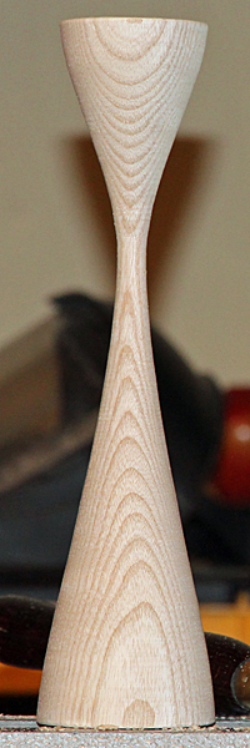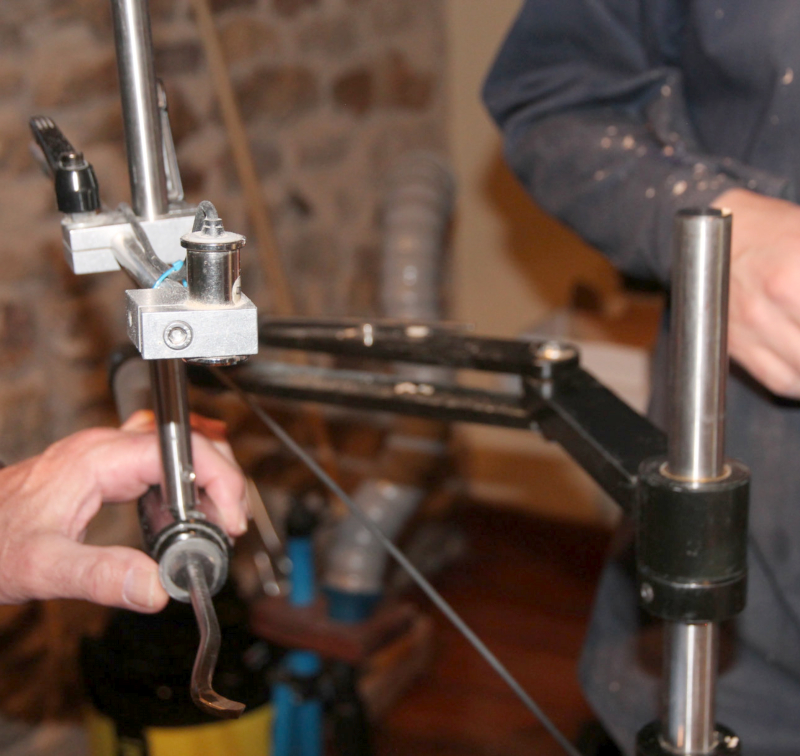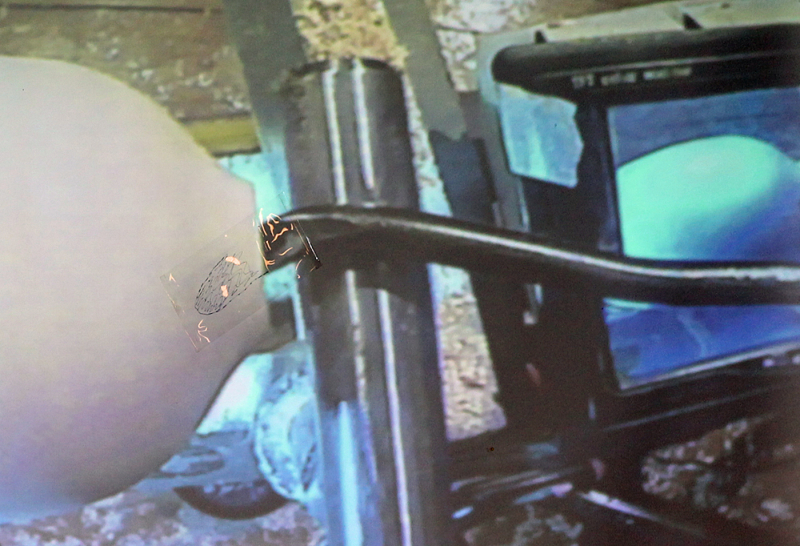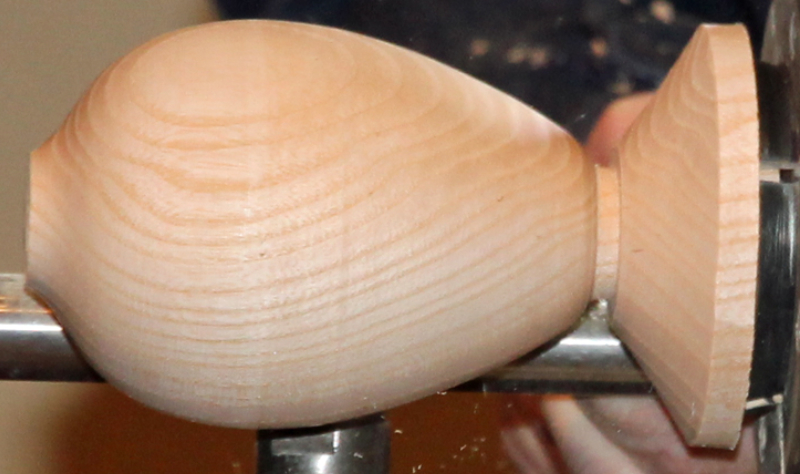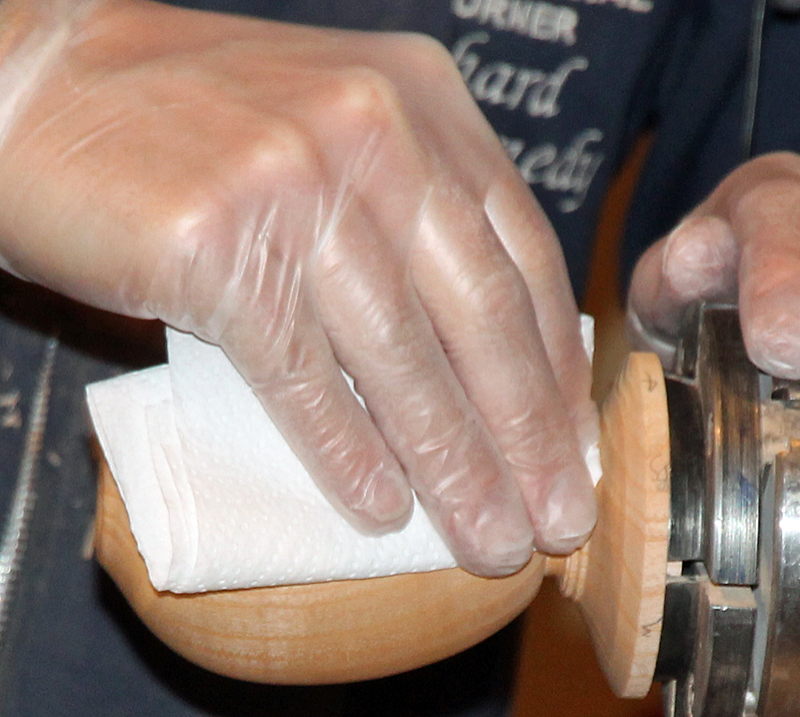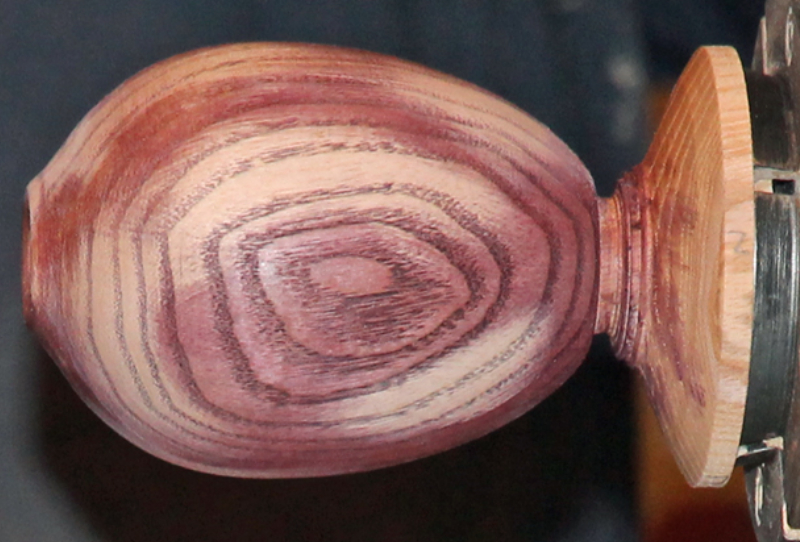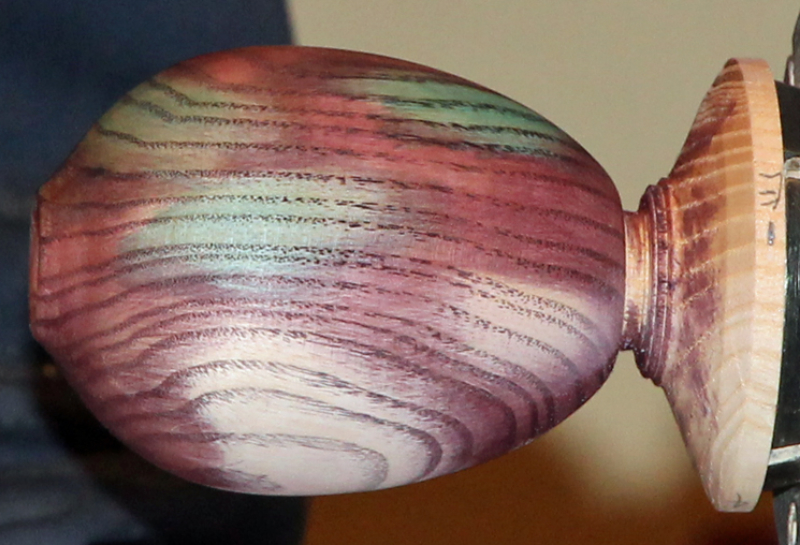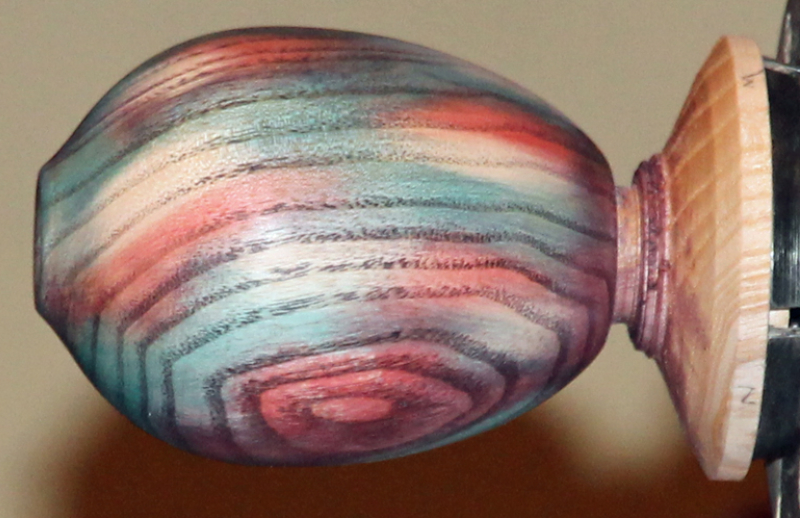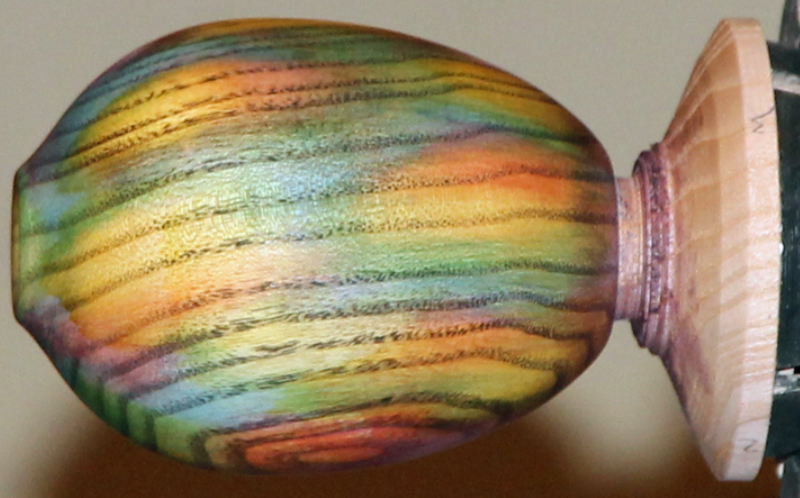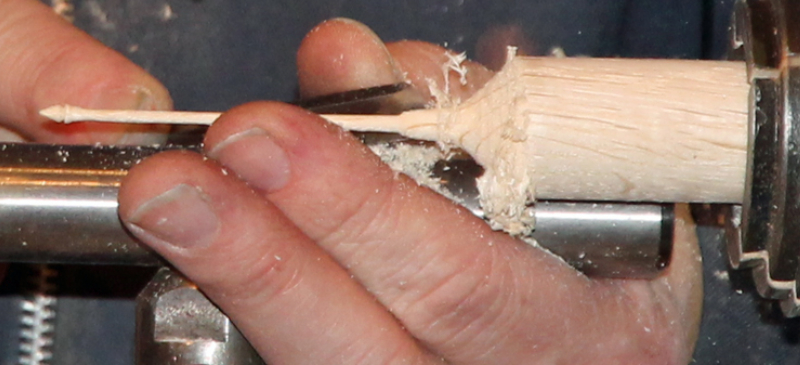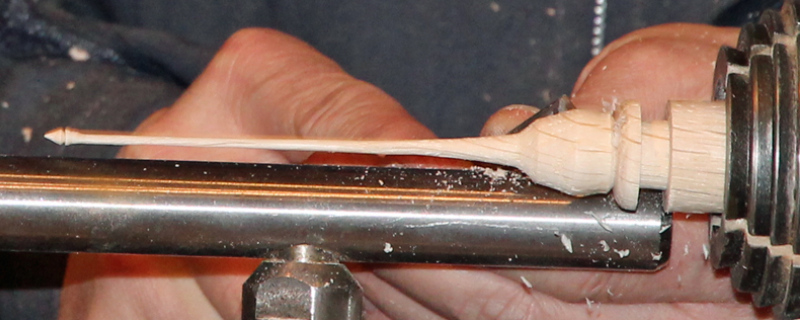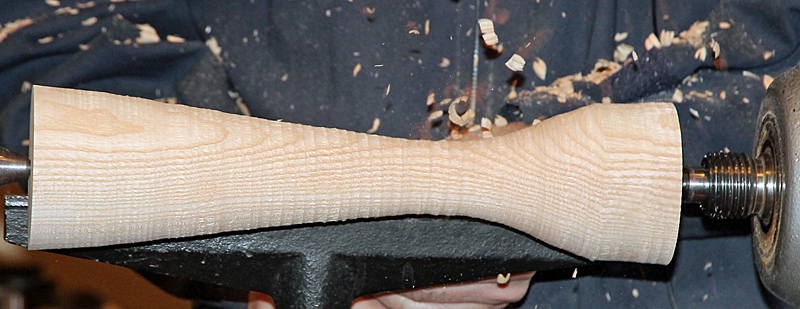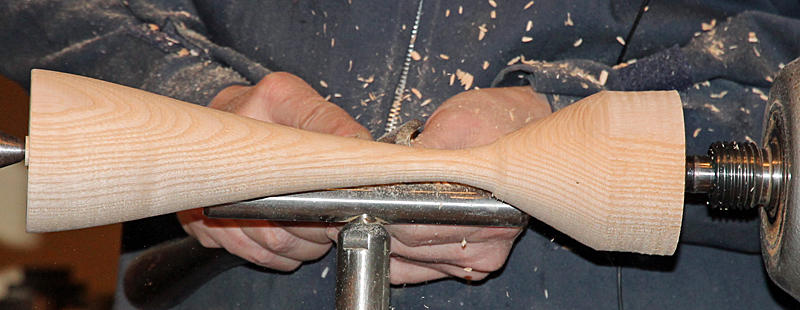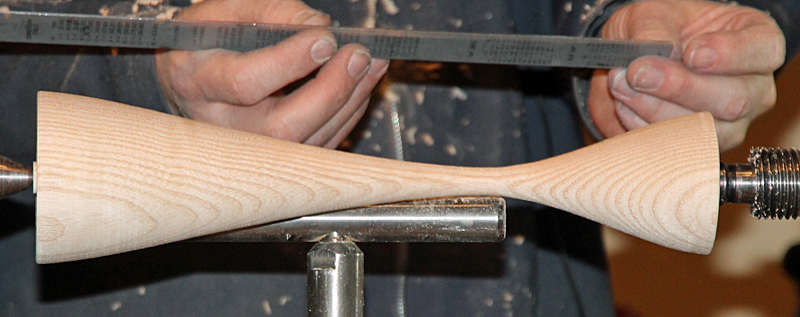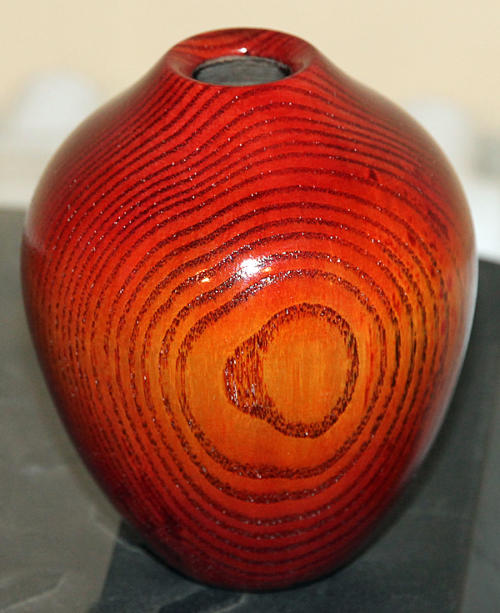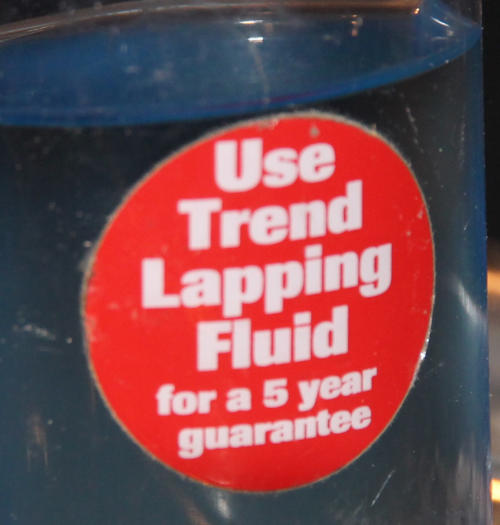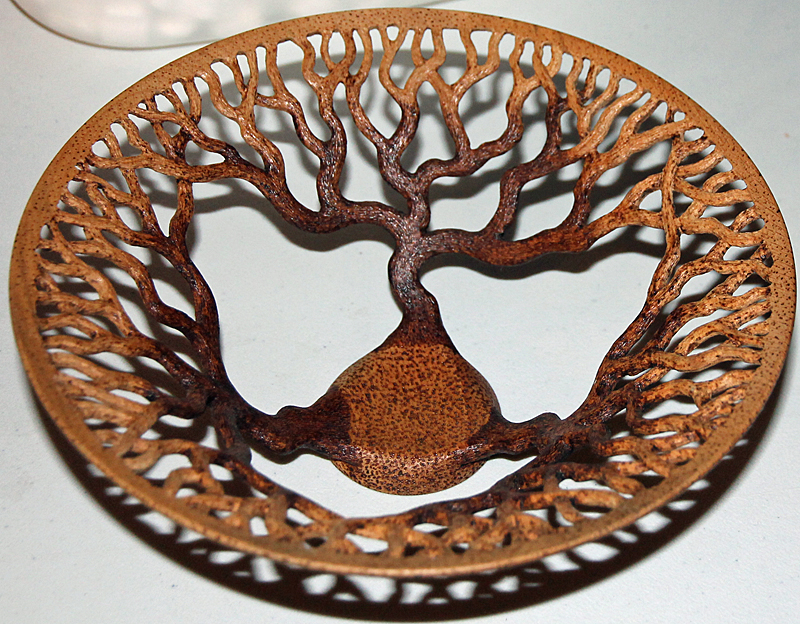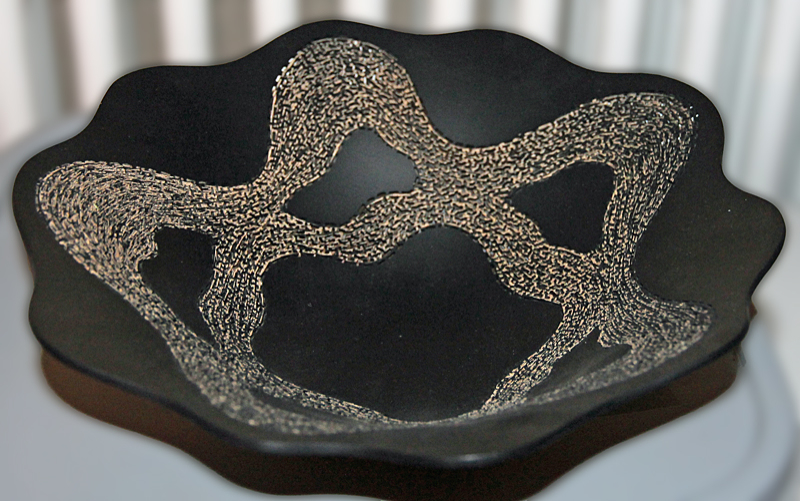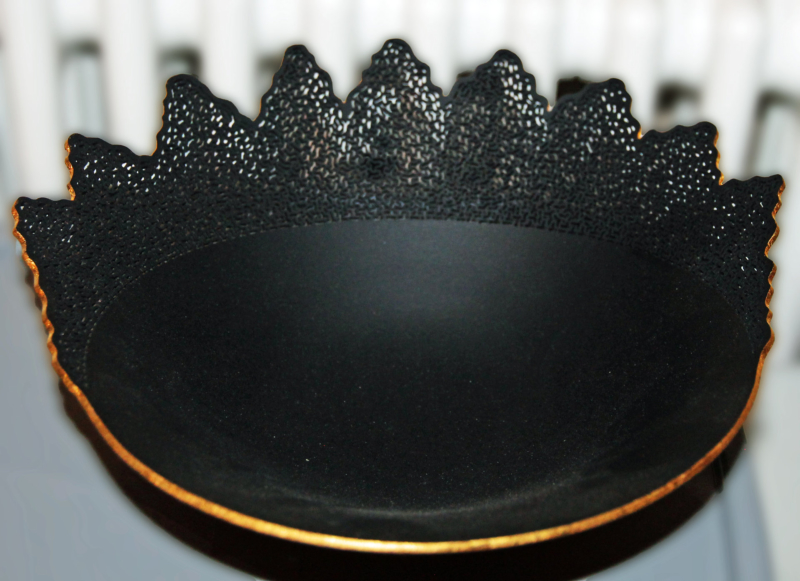with Richard Kennedy (Bole Gallery, Kilberry)
Richard gave us a great evening’s entertainment and demonstration, with plenty of information and techniques to master.
Most of the evening was taken up with creating a coloured hollow form, where he showed us the use of the Simon Hope hollowing jig with camera and monitor – a real eye opener for those who have struggled with creating hollow forms and not having the inside meet the outside! He showed us enough of each technique to see what was needed and then moved on to ‘ones he had made earlier’ to save time. The form was partially turned and hollowed out then Richard finished shaping the outside – he favours turning the base with a curved edge giving the impression of lifting the piece slightly. He coloured the piece with spirit dyes, in this case starting by covering the entire piece with purple to highlight softer wood, then in turn sanding off parts of the form and colouring with blue red and yellow dyes. He creates his highly polished finish with several coats of melamine lacquer and a top coat of clear high gloss car spray (any low priced make will do).
He then went on to make the finial, satisfying the request for a 2mm diameter.
Richard finished the last half hour making a Scandinavian style simple candlestick, which has a very pleasing shape. The wood for the Candlestick had been pre-drilled with a Forstner bit to fit a tealight holder and mounted between a steb centre and tailstock, ensuring the steb centre was perfectly aligned by turning it by hand an inserting his fingertip between steb centre and wood. He then shaped the piece, emphasising the importance of design principles – two-thirds and one-third being more pleasing to the eye. The candlestick had a slightly convex curves leading to the narrowest concave part. Along with the fascinating use of the Simon Hope jig, Richard mentioned other useful tips, one being to recommend the use of lapping fluid to use on a diamond one when sharpening up the edge of his gouges – this changes colour as the gouge becomes sharper.

